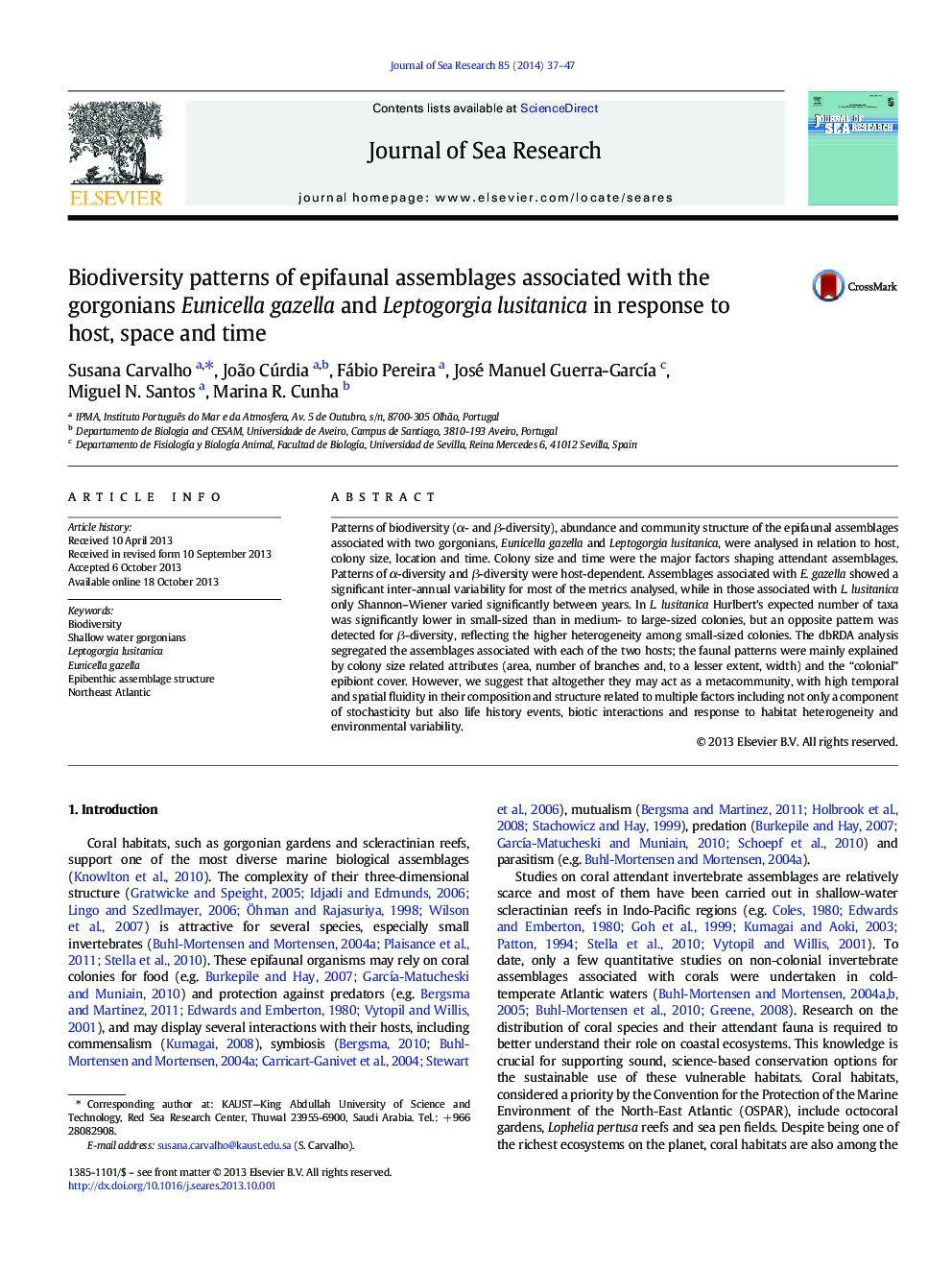| Article ID | Journal | Published Year | Pages | File Type |
|---|---|---|---|---|
| 6387355 | Journal of Sea Research | 2014 | 11 Pages |
Abstract
Patterns of biodiversity (α- and β-diversity), abundance and community structure of the epifaunal assemblages associated with two gorgonians, Eunicella gazella and Leptogorgia lusitanica, were analysed in relation to host, colony size, location and time. Colony size and time were the major factors shaping attendant assemblages. Patterns of α-diversity and β-diversity were host-dependent. Assemblages associated with E. gazella showed a significant inter-annual variability for most of the metrics analysed, while in those associated with L. lusitanica only Shannon-Wiener varied significantly between years. In L. lusitanica Hurlbert's expected number of taxa was significantly lower in small-sized than in medium- to large-sized colonies, but an opposite pattern was detected for β-diversity, reflecting the higher heterogeneity among small-sized colonies. The dbRDA analysis segregated the assemblages associated with each of the two hosts; the faunal patterns were mainly explained by colony size related attributes (area, number of branches and, to a lesser extent, width) and the “colonial” epibiont cover. However, we suggest that altogether they may act as a metacommunity, with high temporal and spatial fluidity in their composition and structure related to multiple factors including not only a component of stochasticity but also life history events, biotic interactions and response to habitat heterogeneity and environmental variability.
Keywords
Related Topics
Physical Sciences and Engineering
Earth and Planetary Sciences
Oceanography
Authors
Susana Carvalho, João Cúrdia, Fábio Pereira, José Manuel Guerra-GarcÃa, Miguel N. Santos, Marina R. Cunha,
